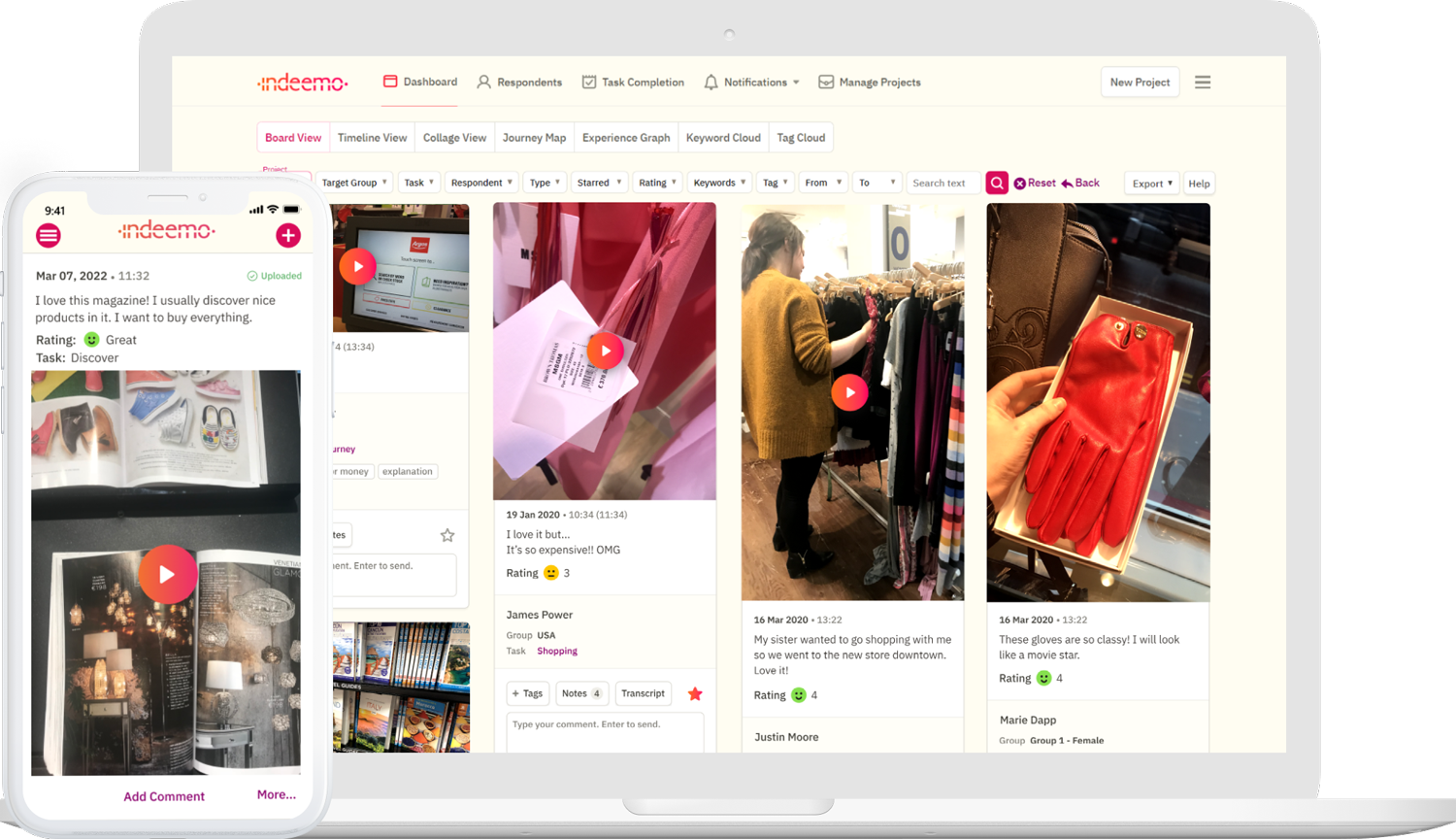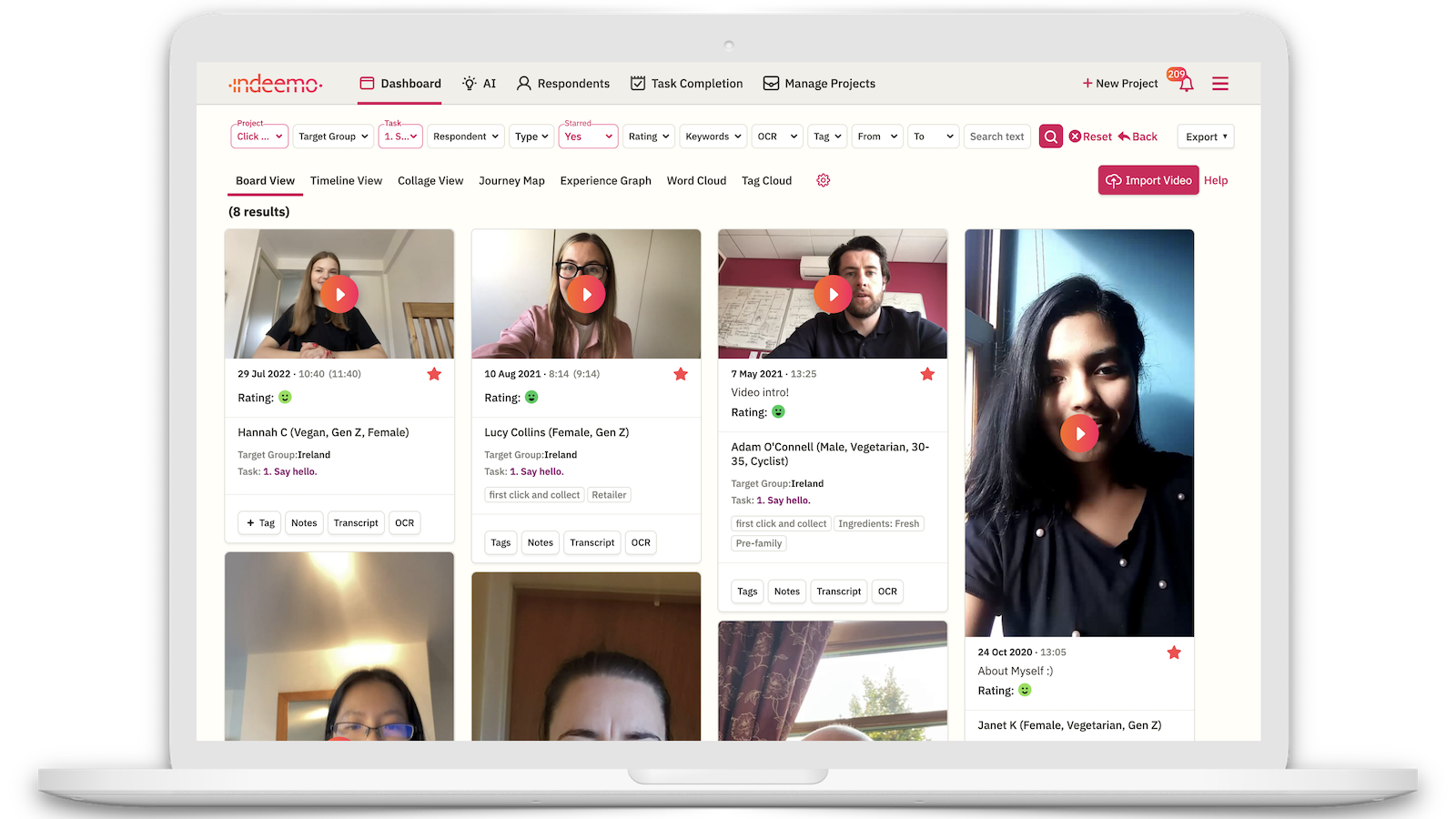In this article, we outline how marketing and insights teams can leverage exploratory qualitative research to capture the buyer journey. As a starting point to understanding the buyer journey and how it impacts the path to purchase, this guide will help you uncover contextual insights to benefit the customer experience.
What is the Buyer Journey?
The buyer journey aims to describe various stages of the path to purchase. Marketing and insights teams use each stage of the buyer journey to develop the right content that is suited to customers needs. The ultimate goal is to provide buyers with the right information that will help them move along each stage of their journey. Most importantly, the content needs to be customer focused, i.e. develop content that people can relate to, and provide them with information that they need during the buyer journey.
The stages of the buyer’s journey are referred to as, awareness, consideration, and decision. There is also the buyers cycle, which refers to the processes customers take when they seek to buy a product or service. The customer buying cycle refers to five different processes - awareness, consideration, intent, purchase, renewal. Be it the buyer journey, or buyer cycle, the primary goal is the same - to truly understand the customer's journey, their experiences across this journey, how they behave, and build empathy for effective communication.
As people go through each stage of the buyer’s journey, organisations need to be confident that they are engaging and communicating effectively to help guide customers. Marketing teams and research agencies play an important role in helping brands build a deep understanding of the buyer journey for this effective communication. Ultimately, to ensure a seamless and positive customer experience.
There are a number of ways for organisations to capture the buyer’s journey. Quantitative questionnaires are commonly used for market research. These techniques will provide you with a general overview of people's attitudes towards a product or service. However, insights for a rich understanding of the buyer journey is becoming increasingly rooted in qualitative research methods. Market researchers, CX management teams, and customer insights teams are looking to adapt to new methods for understanding the buyer’s journey. Whilst there are a number of qualitative methods that you can adopt, this guide is going to focus on ways you understand the buyer’s journey through exploratory qualitative research. First, what is the importance of the buyer journey?
The importance of the Buyer’s Journey
The importance of the buyer journey means understanding that each buyer's experience is different. In a rapid evolving market with technological innovations, people have various purchasing channels to choose from. Digital experiences can differ significantly from traditional bricks and mortar experiences. Consumers have more choices, and understanding the buyer journey will highlight unique experiences across each stage.
Because not each journey is the same, this also means that organisations must be aware that there are different buyer personas. A buyer persona describes the characteristics of customers based on their shared or unique experiences across the buyer journey. Capturing insights that will help you understand the buyer journey will ultimately uncover types of buyers relative to how they engage, perceive, and behave with a brand during their journey. Understanding the buyer journey will help brands to be customer-centric by knowing diverse buyer personas.
Throughout the buyer journey, customers will seek information they need to help guide them through their path to purchase. It is not uncommon for people to feel overwhelmed by information during the buyer journey. Information overload can deter consumers. The information they require needs to be concise and tailored to their needs. By researching the buyer’s journey, marketing teams will be able to capture the right informational needs of customers.
Further reading
What is Customer Journey Mapping?Each touchpoint and pain point customers experience will impact their purchasing decision. It is important that brands uncover each touchpoint where customer engagement occurs. Every pain point will ultimately direct marketing teams to a customer-centric strategy. Even more, our understanding of the buyer journey should inform improvements for how brands communicate with buyers.
This leads us to the ‘why’ of the buyer experience. The buyer journey is important because it simply puts the spotlight on customers and their experience. A holistic understanding of the buyer’s journey should be built from insights that explain why customers choose a different channel, how they feel about their online purchasing experience, and what areas of their journey impacted their purchasing decision. This is where exploratory qualitative research comes into play. Yes, quantitative market research can give you an overview of customers' attitudes. However, it is difficult to truly understand the why, and behaviours during each stage of the buyer journey. That said, insights from quantitative data can give you the foundations of the buyer journey. This should complement the insights from exploratory qualitative research, and vice versa. So, how can you build exploratory qualitative research into your buyer journey marketing strategy?
Exploratory qualitative research for the Buyer’s Journey
Aligning the buyer journey with exploratory qualitative research means market research can be driven by rich buyer experience insights. The goal of qualitative market research is to uncover why customers feel the way they feel about their relationship with a brand or product. The concept of exploratory qualitative research is to also capture areas about the buyer journey that were previously unknown. These unknowns can directly inform future buyer journey marketing strategies. So, how can you build exploratory qualitative research into your current marketing strategy?
Review Existing Data
Qualitative exploratory research should not be a stand alone initiative or project. Designing a strong qualitative research strategy should leverage on previously known insights. If these insights have emerged from customer feedback surveys, you should use them well. Existing data will tell you what you already know about the buyer journey. Ultimately, they will help direct your new exploratory approach.
Avoid Silos
It is not uncommon for various teams across an organisation to fall into the trap of working in silos. Your new research strategy should bring every voice to the table. Be inclusive of the various teams at your brand. Ux teams, CX teams, and even senior executives should all have input. Why? To simply put it, each team will have a different idea about the buyer journey. UX teams will focus primarily on the user experience, maybe at a detailed feature level for example. By being inclusive during your research design strategy, you will always need to bring the voice of the customer first.
Be Open-minded
Adopting an exploratory qualitative research strategy requires you and your team of researchers to be open-minded. What does this mean? Unlike evaluative research, or testing of attitudes towards a new marketing campaign - the results of your exploratory research should present you with new questions and problem statements. Your research participants will describe how they experience various touchpoints. They will show you areas of engagement that might not make sense for them. As a result of this, you and your team should be able to synthesise and generate overarching themes to be addressed in your new marketing campaign strategy.
Outline a Research Objective
Your research objective will help define the scope of your project. Although you are taking a new exploratory approach, the research objective will guide you in a number of ways. It will enable you to identify what data needs to be captured and when. It will help you identify the number of research participants you need to recruit. And it will give an idea of the duration you need for your project.
Encourage Research Participants
Unlike a quantitative approach, adopting exploratory qualitative research should be engaging for research participants. This is the golden nugget to capturing the true buyer journey. The fieldwork will be conducted over a period of time, and your research participants will be bringing you along the buyer journey with them. This means that you and your researchers can follow up with participants on key moments that occur during the buying journey. When customers present you with unknown insights during their path to purchase experiences, you should converse with them. In doing so you will create a trusted relationship with an open dialogue. Encourage your research participants to dig deeper about pain points they experienced for example.
You might be asking, but how can I do this at a focus group or one to one customer interview? This is where we like to introduce novel and innovative qualitative research methods that will allow you to leverage technology for your buyer journey research.
Tools and techniques for Buyer Journey research
The concept of exploratory qualitative research is to help you dig deeper into the lives of your research participants. It leverages on many qualitative methods. In the context of understanding the buyer journey, ethnographic fieldwork is a useful approach to understanding the why beneath buyer experiences. Observations of customers can be done remotely through the use of mobile technology.
Diary studies, particularly video diaries, harness the power of visual media. Research participants record their experiences and behaviours across each stage of the buyer journey. In doing so, they describe how they are feeling to help you understand and empathise with their experience.
A key benefit of this, is that the technology used for this type of exploratory research allows you to capture these experiences in the moment as the buyer journey is happening. Your research participants can complete diary study tasks over a period of time. As each participant describes their experiences, researchers will be able to respond and follow up on key insights.
CASE STUDY
How a consumer insights agency used a path-to-purchase study to understand the car Buying Journey.
Increasingly, market researchers are looking to leverage technology to draw in new insights about the buyer experience. Technology for data gathering is incredibly powerful through mobile. Research participants can engage more openly with the researcher impacting their thoughts and feelings.
In summary, a rich and insightful understanding of the buyer journey benefits both customers and organisations. Exploratory qualitative research uncovers insights that drive improvements to marketing campaigns. Most importantly, brands become more customer-centric as these insights - through the use of mobile technology - bring you along the buyer journey with your customers.








